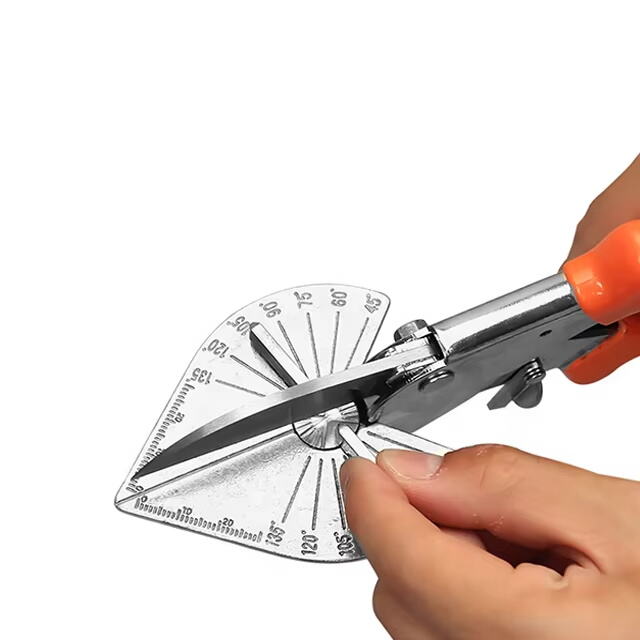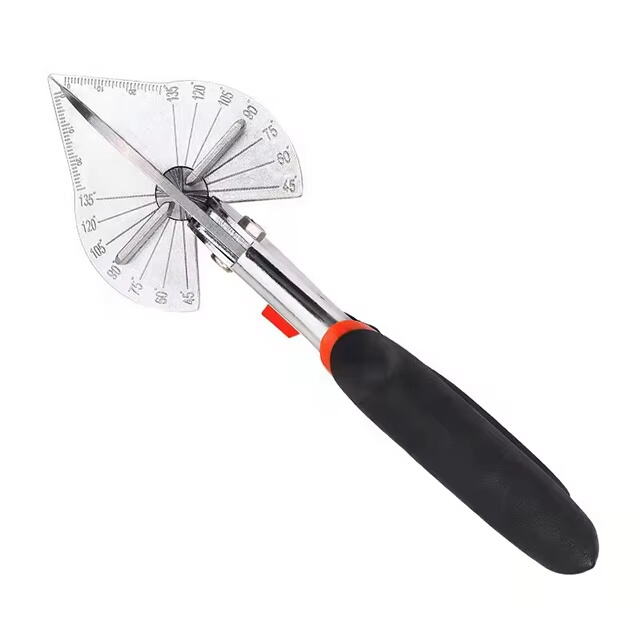Rethinking Tool Efficiency in Modern Renovation
In today’s fast-paced world of renovation and DIY craftsmanship, efficiency matters more than ever. Homeowners, handymen, and professionals are constantly seeking ways to minimize the number of tools required for a task without compromising on performance. This is where the idea of Multi-Purpose Scrapers becomes incredibly appealing. Promising versatility, convenience, and cost savings, these tools aim to combine multiple functions into a single design. But how well do they actually perform under real work conditions? To determine their true value, we must explore the features, benefits, limitations, and practical uses of Multi-Purpose Scrapers across various scenarios.
Design Features of Multi-Purpose Scrapers
Blade Configurations and Edges
One of the most distinguishing elements of Multi-Purpose Scrapers is their blade design. Most models feature multiple edges – straight, curved, pointed, or notched – tailored for different materials and angles. A straight edge may be used for general scraping, while a pointed tip helps reach tight corners or remove grout from seams. Notched blades, meanwhile, can be useful for spreading adhesives or smoothing compounds. These configurations aim to make Multi-Purpose Scrapers adaptable to numerous tasks without swapping out tools.
Handle and Build Quality
The ergonomics and construction of a scraper significantly affect its usability. Multi-Purpose Scrapers are often equipped with reinforced handles, rubberized grips, or adjustable shafts to improve comfort and leverage. Durable construction using stainless steel or high-grade plastic ensures they can withstand repeated use across varied surfaces. High-end models may even include interchangeable heads to enhance their adaptability even further.
Common Applications of Multi-Purpose Scrapers
Wallpaper and Paint Removal
Multi-Purpose Scrapers are commonly employed for removing wallpaper, dried paint, and wall decals. Their wide, flat blades can efficiently strip away layers without damaging the wall underneath. A key benefit is the ability to switch between blade edges when moving from broad surfaces to narrow trims. This feature allows the user to address multiple surfaces with a single tool.
Caulk, Adhesive, and Grime Elimination
These scrapers also excel at removing old caulk, silicone, tape residue, or construction adhesives. Sharp pointed tips can dig into seams, while flat or beveled blades assist in lifting sticky substances from tiles, countertops, or flooring. Their design is particularly helpful when working around sinks, bathtubs, and kitchen backsplashes where tight access is often required.

Evaluating Versatility in Field Work
Flexibility Across Surfaces
Multi-Purpose Scrapers are intended for use on a variety of surfaces including drywall, glass, ceramic, wood, and metal. Their ability to adapt makes them popular in both indoor and outdoor projects. However, the true test of their versatility lies in how seamlessly they transition between materials without the need for additional tools. In many cases, one scraper can indeed cover the range of tasks involved in wall prep, tiling, and finishing.
Transitioning Between Tasks
The best Multi-Purpose Scrapers minimize downtime by allowing users to handle multiple operations consecutively. For example, a renovator could scrape off old paint, apply filler, and later smooth the surface all with the same tool. This not only speeds up workflow but also lightens the toolbox. The convenience provided by a well-designed scraper can be particularly noticeable in time-sensitive renovations.
Benefits Beyond Convenience
Reduced Tool Clutter
One of the significant advantages of Multi-Purpose Scrapers is their contribution to tool organization. Instead of needing a separate knife, chisel, and spreader, a single Multi-Purpose Scraper might fulfill all those roles. This is especially useful for mobile professionals or DIYers working in compact spaces. Fewer tools mean less searching, easier cleanup, and greater overall productivity.
Cost-Effectiveness
From a budget standpoint, Multi-Purpose Scrapers can offer good value. While some high-end models may carry a premium price tag, their ability to replace multiple single-use tools often justifies the cost. This is particularly relevant for beginners building a toolkit or professionals looking to minimize equipment investment while maximizing functionality.
Limitations to Consider
Performance on Heavy-Duty Jobs
While Multi-Purpose Scrapers shine in a wide range of tasks, they may struggle with extremely demanding applications. Thick flooring adhesives, epoxy coatings, or industrial-grade materials often require specialized tools. In such cases, a dedicated scraper with a more robust build or motorized assistance might be necessary. Users should evaluate the nature of their tasks before relying solely on a Multi-Purpose Scraper.
Compromises in Blade Precision
The attempt to do everything with one tool sometimes leads to compromises in precision. A scraper designed to do both broad and fine work may not excel at either. For users who require high detail, such as in finish carpentry or artistic restoration, a more specialized scraper may deliver better results. Understanding these trade-offs is essential when deciding on your tools.
Material and Construction Considerations
Blade Material and Edge Retention
The longevity and performance of a Multi-Purpose Scraper depend heavily on the blade material. Stainless steel blades resist rust and maintain their edge longer, making them ideal for wet environments. Carbon steel may offer sharper edges but requires more maintenance. Plastic or composite blades are safer for delicate surfaces but may wear out quickly. Choosing the right material affects both the scraper's performance and maintenance needs.
Integrated Versus Modular Designs
Some Multi-Purpose Scrapers have fixed blades and features, while others use modular designs with interchangeable heads or snap-on attachments. Each style has its pros and cons. Integrated designs offer simplicity and durability, while modular versions increase versatility. The choice depends on user preferences for maintenance, ease of use, and overall functionality.
Real-World Usability
Learning Curve and Skill Requirements
For beginners, using a Multi-Purpose Scraper might require some experimentation to understand how to best utilize its various features. While professionals might quickly adapt to the tool’s functions, first-time users should expect a slight learning curve. Many manufacturers provide guides or demos to shorten this process and improve results from the start.
Storage and Portability
Another often-overlooked benefit is storage efficiency. Multi-Purpose Scrapers usually take up less space compared to several individual tools. Their compact form makes them easy to transport in tool belts, boxes, or on-site pouches. This is particularly helpful for tradespeople who need to carry their gear across multiple locations daily.
Practical Tips for Choosing the Right Tool
Prioritize Based on Project Needs
Before investing in a Multi-Purpose Scraper, identify the types of tasks you perform most frequently. If your work regularly involves switching between scraping, spreading, and detail cleaning, a high-quality Multi-Purpose Scraper will likely serve you well. However, if your work is focused on a specific application, such as tile removal or paint stripping, a dedicated scraper might still be more efficient.
Consider Brand Reputation and Reviews
While avoiding direct comparison to competitors, it is wise to explore user reviews and testimonials when selecting a Multi-Purpose Scraper. Look for consistent feedback regarding durability, ease of use, and blade quality. Established brands with good reputations typically provide better customer support and warranties, which can be beneficial in the long run.
Maintenance Best Practices
Blade Replacement and Sharpening
Keeping blades sharp is crucial for maintaining performance. Some Multi-Purpose Scrapers come with replaceable blades, while others can be resharpened using a file or whetstone. Regularly check for wear and replace parts as needed. Dull blades increase effort and risk surface damage, reducing tool efficiency.
Cleaning and Safe Handling
After each use, clean your scraper to remove debris and adhesive residue. This prolongs the tool’s life and ensures smoother operation. Store the scraper in a dry area, and always use blade guards or cases to avoid accidental injury. Routine maintenance keeps the tool ready for your next project.
FAQ
What tasks can a Multi-Purpose Scraper handle effectively?
Multi-Purpose Scrapers can handle wallpaper removal, paint stripping, adhesive scraping, caulk removal, and light grout cleaning with ease.
Are Multi-Purpose Scrapers suitable for professional use?
Yes, many professionals use high-quality Multi-Purpose Scrapers for efficiency and versatility across various job types.
How do I maintain the sharpness of the blade?
Sharpen the blade with a fine file or replace it when it dulls. Regular cleaning also helps maintain edge quality.
Can one Multi-Purpose Scraper replace all my other tools?
While highly versatile, a Multi-Purpose Scraper may not completely replace specialized tools for heavy-duty or high-precision tasks.
Table of Contents
- Design Features of Multi-Purpose Scrapers
- Common Applications of Multi-Purpose Scrapers
- Evaluating Versatility in Field Work
- Benefits Beyond Convenience
- Limitations to Consider
- Material and Construction Considerations
- Real-World Usability
- Practical Tips for Choosing the Right Tool
- Maintenance Best Practices
- FAQ


